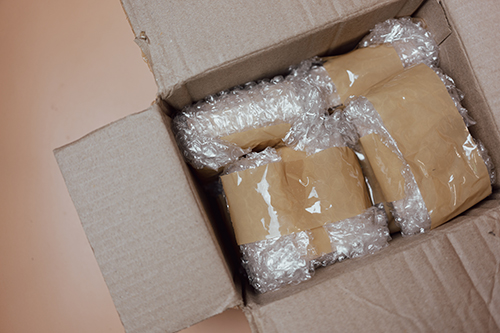
It’s so frustrating when you pack your products with love and care, only for them to arrive damaged at your customers’ doorstep. Damaged products disappoint customers and reflect poorly on your business—even if you did try your best to secure the packaging.
Still, even if you’re confident in your packaging ability, there’s always room for improvement, as they say. Here are five packaging tips to prevent damaged goods and protect your business’s reputation.
Choose the Right Packaging Materials
Not all packaging materials are made equal. You don’t want to use a flimsy paper bag or beat-up box to ship your products to your customers. You have a lot of options when it comes to packaging materials; cardboard boxes and polyethylene bags or envelopes are two of the most popular choices.
Make sure to choose the appropriate size and strength cardboard box for your products should you decide to use them. You must also choose the right thickness for poly bags and other plastic packaging. Too-thin materials can lead to tears and damage during transit; thick materials are less likely to tear but can add extra weight and cost. Consider the type of product you’re shipping and choose your packaging materials accordingly.
Use Cushioning
Cushioning means padded material such as bubble wrap or foam inserts. You can use these materials to individually wrap fragile items or as a layer between products in a box. The proper cushioning material will prevent your items from moving around during shipment.
Use Proper Sealing Techniques
One strip of tape is not enough to tightly seal your packages. You’ll want to use multiple layers of tape, especially for heavy or bulky items. Tape all seams and edges to prevent the package from bursting open during transit.
Label Your Packages Correctly
Mail workers are busy folk. Chances are, they’ll handle fragile packages like any other package if you don’t label them properly…which is to say, not so gently. Use clear, bold labels such as “Fragile” or “Handle with Care” to encourage them to be considerate when handling your packages.
Consider Environmental Factors
Think about the environment your package will travel through. Will it travel through hot, dry Texas or humid, rainy Florida? Environmental conditions can affect your packaging materials differently. For example, paper-based products can become weak and soggy in wet conditions, while plastic can warp and melt in extreme heat. Consider using moisture-resistant packaging or choosing alternative materials for different destinations.
By following these simple and actionable packaging tips to prevent damaged goods, your packages will successfully survive transit. Thrill your customers by doing all you can to ensure their products arrive safe and sound. Surely, it will also be a relief not to have your efforts undone by a packaging slip-up.

